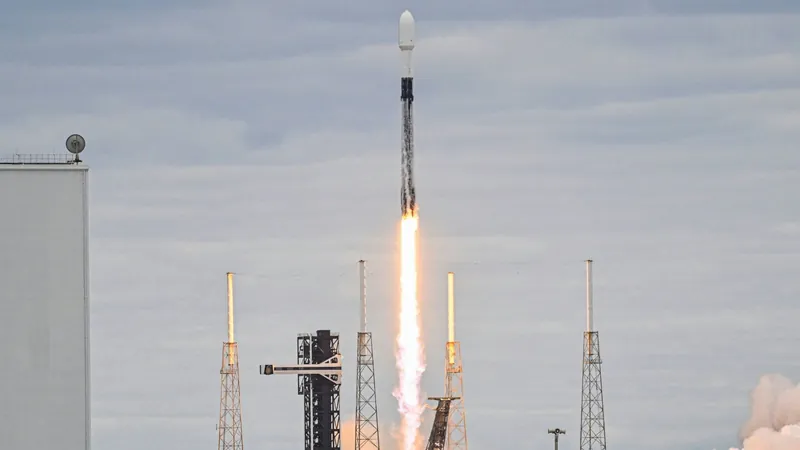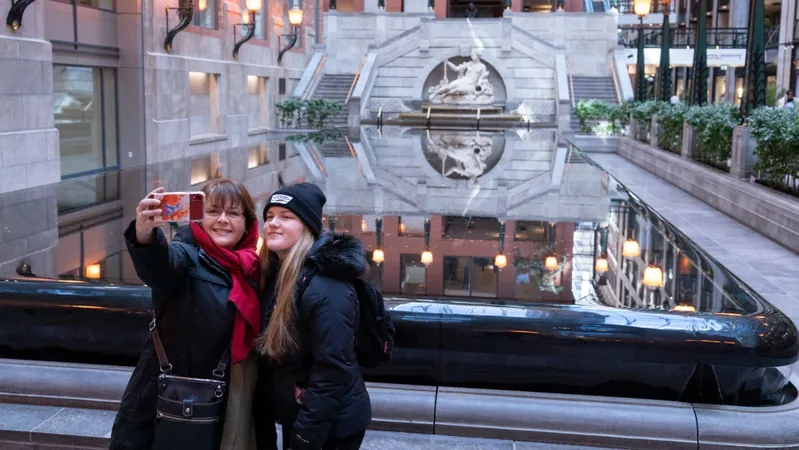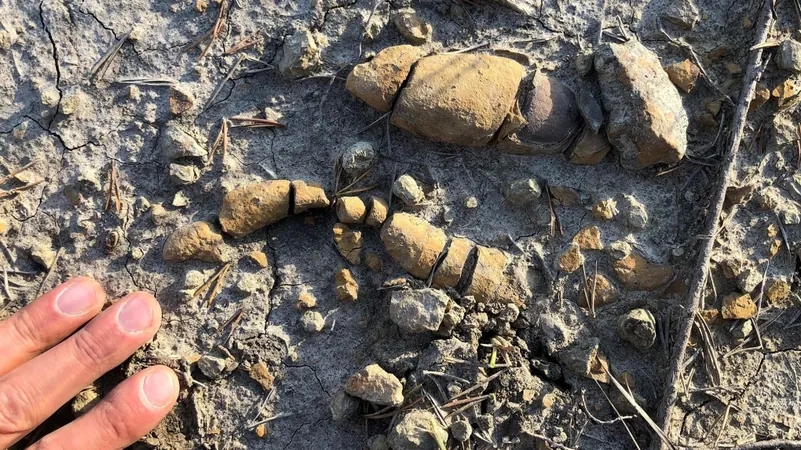
A Sonic Journey Through the Heart of the Amazon: Lungs of the Earth Exhibition
2024-11-29
Author: Amelia
Upon entering the Loeb Studio, it was hard not to be taken aback by the minimalist setup of the "Lungs of the Earth" exhibition. As I stepped into the space, the absence of traditional artwork struck me; the walls were bare, leaving me to search for visual stimuli. The only elements gracing the space were four intricately cut paper squares, each depicting scenes from the lush Amazon jungle. Dim lighting cast flickering shadows, attempting to evoke the essence of a rainforest that existed 8,000 kilometers away.
The true essence of "Lungs of the Earth" lay in its soundscape. Enveloping me were rich auditory tapestries that brought the forest to life: the rush of waterfalls, the calls of exotic birds, and the ominous crackle of fire consuming trees, complemented by thunderous rumbles that resonated underfoot. However, despite this immersive auditory experience, I struggled to feel as though I had truly stepped into the heart of the Amazon.
Lead artist Alyssa Martens described the distant feeling as intentional. Originally from Sao Paulo, Brazil, she embraced environmental advocacy after witnessing the devastating forest fires in the Amazon in 2019. This catastrophe darkened skies across the country, igniting a passion within her to explore the interconnectedness of distant yet closely tied ecosystems. "These places we think are separate really aren’t," she emphasized, suggesting our environmental plight transcends borders.
One standout feature of the soundscape was the inclusion of recordings from Canadian terrains. The cyclical poem "Water," penned by Patrizia Longhitano, floated over the sound of a rushing river in Quebec. As bird calls from Brazil—specifically the piha, cacique, and tinamou—intertwined with the poetry, Longhitano's poignant words captivated me: "When I memorize the ripples of the water I’ll become a woman, forgetting I was once a fish." The cycle culminated with a recording of a forest fire that originated near my childhood home in the Northwest Territories, a testament to the far-reaching consequences of these environmental crises.
In discussing sound’s role, Martens highlighted the piha, renowned as one of the loudest birds in the world and a creature of great significance in this ecological narrative. She envisioned the piha not as a silent victim but as a vocal entity in this dystopian landscape, possibly providing its own rallying cry for change.
But what would the piha express if she could communicate directly with us? It’s complex; perhaps nothing—or perhaps everything. Instead, "Lungs of the Earth" invited me to connect with abstract and distant realities, navigating memories that were not easily tangible but could still be felt through sound. "It’s the feeling of memory," Martens articulated, evoking a sense of nostalgia and longing for spaces and times that feel both real and imaginary.
The final piece of the cycle, titled "Earth," ended in a stark sense of desolation. As the auditory journey looped back to "Water," the mix of Canadian and Brazilian river sounds blended into a harmonious yet poignant reflection. While it’d be simplistic to reduce her work to mere optimism, Martens hopes to ignite contemplation about the potential loss and what can still exist.
This exhibition challenges our understanding of memory—not just as a recollection of the past, but as a pathway to new possibilities. What if memory is a reminder that something once lived and could yet re-emerge?
"Lungs of the Earth" will remain accessible digitally to UBC students until December 31. Don’t miss this auditory exploration that connects disparate worlds!









 Brasil (PT)
Brasil (PT)
 Canada (EN)
Canada (EN)
 Chile (ES)
Chile (ES)
 España (ES)
España (ES)
 France (FR)
France (FR)
 Hong Kong (EN)
Hong Kong (EN)
 Italia (IT)
Italia (IT)
 日本 (JA)
日本 (JA)
 Magyarország (HU)
Magyarország (HU)
 Norge (NO)
Norge (NO)
 Polska (PL)
Polska (PL)
 Schweiz (DE)
Schweiz (DE)
 Singapore (EN)
Singapore (EN)
 Sverige (SV)
Sverige (SV)
 Suomi (FI)
Suomi (FI)
 Türkiye (TR)
Türkiye (TR)